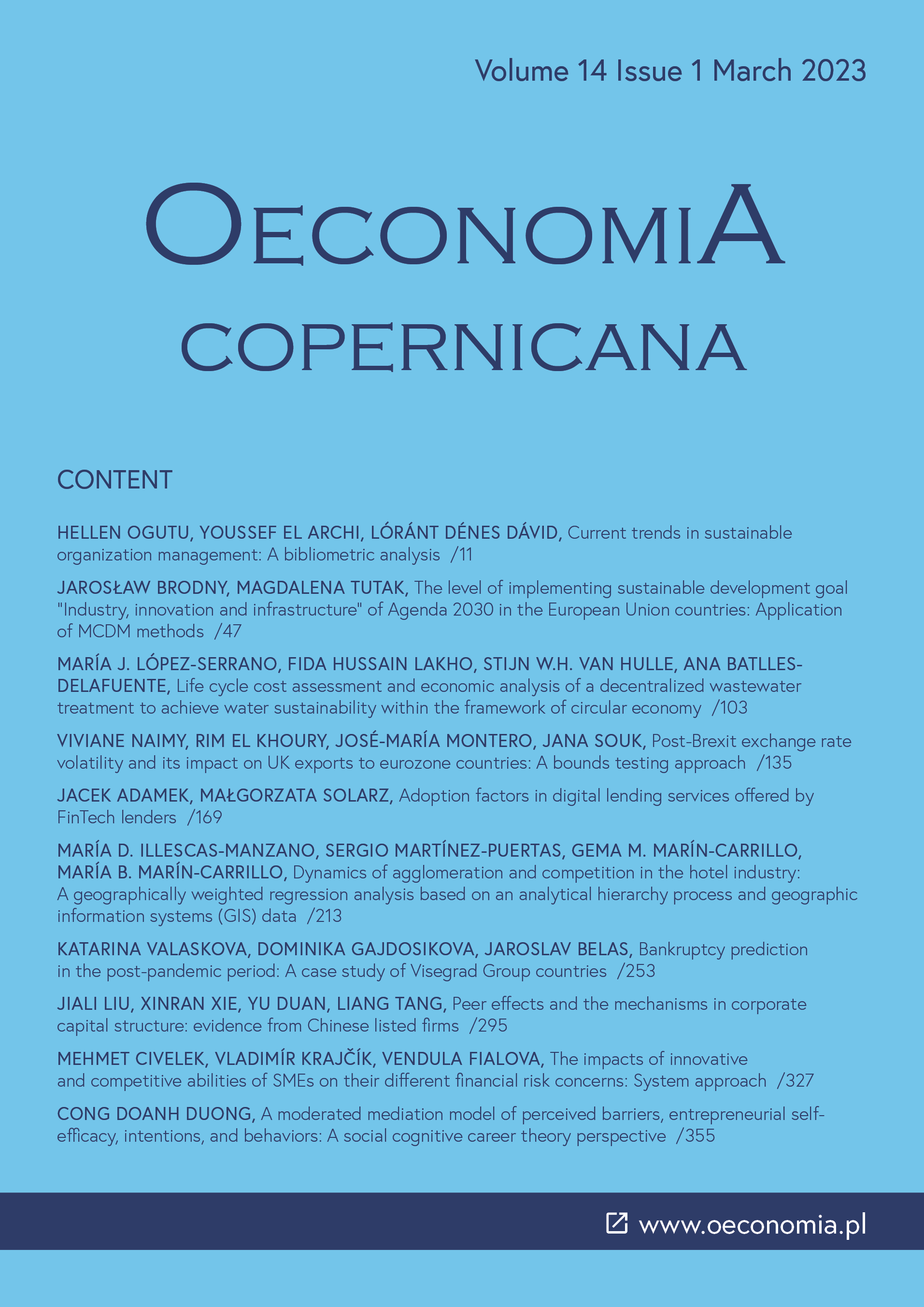Bankruptcy prediction in the post-pandemic period: A case study of Visegrad Group countries
Bankruptcy prediction in the post-pandemic period: A case study of Visegrad Group countries
Author(s): Katarina Valaskova, Dominika Gajdosikova, Jaroslav BelasSubject(s): National Economy, Business Economy / Management, Health and medicine and law
Published by: Instytut Badań Gospodarczych
Keywords: bankruptcy; prediction model; multiple discriminant analysis; Visegrad group countries;
Summary/Abstract: Research background: Effective monitoring of financial health is essential in the financial management of enterprises. Early studies to predict corporate bankruptcy were published at the beginning of the last century. The prediction models were developed with a significant delay even among the Visegrad group countries.Purpose of the article: The primary aim of this study is to create a model for predicting bankruptcy based on the financial information of 20,693 enterprises of all sectors that operated in the Visegrad group countries during the post-pandemic period (2020?2021) and identify significant predictors of bankruptcy. To reduce potential losses to shareholders, investors, and business partners brought on by the financial distress of enterprises, it is possible to use multiple discriminant analysis to build individual prediction models for each Visegrad group country and a complex model for the entire Visegrad group.Methods: A bankruptcy prediction model is developed using multiple discriminant analysis. Based on this model, prosperity is assessed using selected corporate financial indicators, which are assigned weights such that the difference between the average value calculated in the group of prosperous and non-prosperous enterprises is as large as possible.Findings & value added: The created models based on 6?14 financial indicators were developed using different predictor combinations and coefficients. For all Visegrad group countries, the best variable with the best discriminating power was the total indebtedness ratio, which was included in each developed model. These findings can be used also in other Central European countries where the economic development is similar to the analyzed countries. However, sufficient discriminant ability is required for the model to be used in practice, especially in the post-pandemic period, when the financial health and stability of enterprises is threatened by macroeconomic development and the performance and prediction ability of current bankruptcy prediction models may have decreased. Based on the results, the developed models have an overall discriminant ability greater than 88%, which may be relevant for academicians to conduct further empirical studies in this field.
Journal: Oeconomia Copernicana
- Issue Year: 14/2023
- Issue No: 1
- Page Range: 253-293
- Page Count: 41
- Language: English

